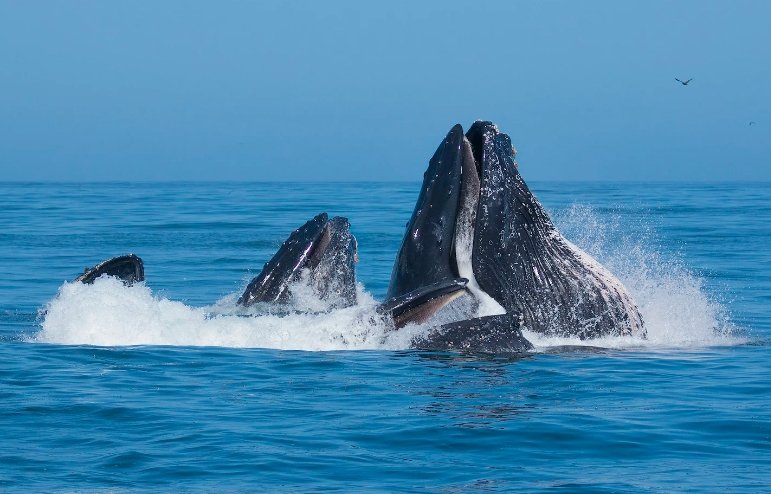In a remarkable discovery, scientists have found that humpback whales are not only intelligent but also capable of creating and using tools. These marine giants have been observed crafting intricate “bubble nets” to trap their prey, showcasing a level of ingenuity previously thought to be exclusive to humans and a few other animal species. This groundbreaking research sheds new light on the cognitive abilities of humpback whales and their sophisticated hunting techniques.
The Discovery of Bubble Nets
Humpback whales have long been known for their complex behaviors, but the discovery of their tool-making abilities has taken their reputation to new heights. Researchers in Southeast Alaska observed solitary humpback whales creating bubble nets to catch krill, tiny shrimp-like creatures that form a significant part of their diet. These whales blow bubbles in specific patterns, forming nets with internal rings that trap their prey.
The process of creating these bubble nets is highly sophisticated. The whales control various aspects of the nets, such as the number of rings, the size and depth of the net, and the spacing between bubbles. This level of control allows them to capture up to seven times more prey in a single feeding dive without expending extra energy. This discovery highlights the whales’ ability to modify their environment to enhance their hunting efficiency.

The use of bubble nets is not a new behavior among humpback whales, but this is the first time they have been observed manipulating these tools in such a detailed manner. This behavior places humpback whales among the rare group of animals that both create and use tools, a hallmark of advanced intelligence.
Implications for Marine Biology
The discovery of humpback whales using tools has significant implications for the field of marine biology. It challenges previous assumptions about the cognitive abilities of marine mammals and opens up new avenues for research. Understanding how these whales develop and use tools can provide insights into their social structures, learning processes, and overall intelligence.
Researchers believe that the ability to create and use tools is a learned behavior among humpback whales. This suggests that these whales have a form of culture, where knowledge is passed down from one generation to the next. The study of this behavior can help scientists understand the social dynamics of humpback whale populations and how they adapt to their environment.
The use of advanced research tools, such as non-invasive suction-cup tags and drones, has been crucial in studying these behaviors. These technologies allow researchers to track the whales’ movements and observe their hunting techniques in detail. The data collected from these studies can help inform conservation efforts and ensure the protection of these intelligent marine mammals.
The discovery also highlights the importance of preserving the natural habitats of humpback whales. Protecting their feeding grounds in Southeast Alaska is essential for their survival, as their energy budget for the entire year depends on their ability to capture enough food during the summer and fall. Conservation efforts must take into account the complex behaviors and needs of these remarkable animals.
Future Research and Conservation Efforts
The discovery of tool use among humpback whales is just the beginning of a new era in marine research. Scientists are eager to explore the full extent of these whales’ cognitive abilities and how they compare to other known tool-using animals. Future research will focus on understanding the learning processes involved in tool use and how these behaviors are transmitted within whale populations.
Conservation efforts will also benefit from this newfound knowledge. By understanding the specific needs and behaviors of humpback whales, conservationists can develop more effective strategies to protect their habitats and ensure their long-term survival. This includes measures to reduce human impacts, such as noise pollution and fishing activities, that can disrupt their feeding and breeding behaviors.
Public awareness and education are also crucial components of conservation efforts. Sharing the fascinating discoveries about humpback whales with the public can foster a greater appreciation for these intelligent creatures and the need to protect them. Engaging communities in conservation initiatives can help build a collective effort to preserve the natural world.
The journey of discovery is far from over, and each new finding brings us closer to understanding the complex lives of humpback whales. As we continue to explore the depths of the ocean and the minds of its inhabitants, we are reminded of the incredible diversity and intelligence that exists within the natural world. The story of humpback whales and their bubble nets is a testament to the wonders of nature and the endless possibilities of scientific inquiry.














